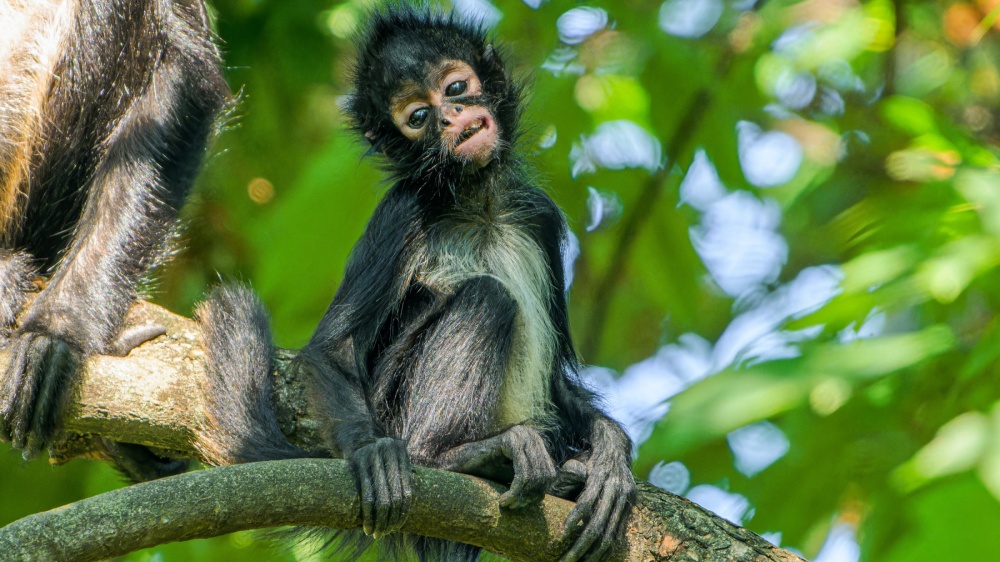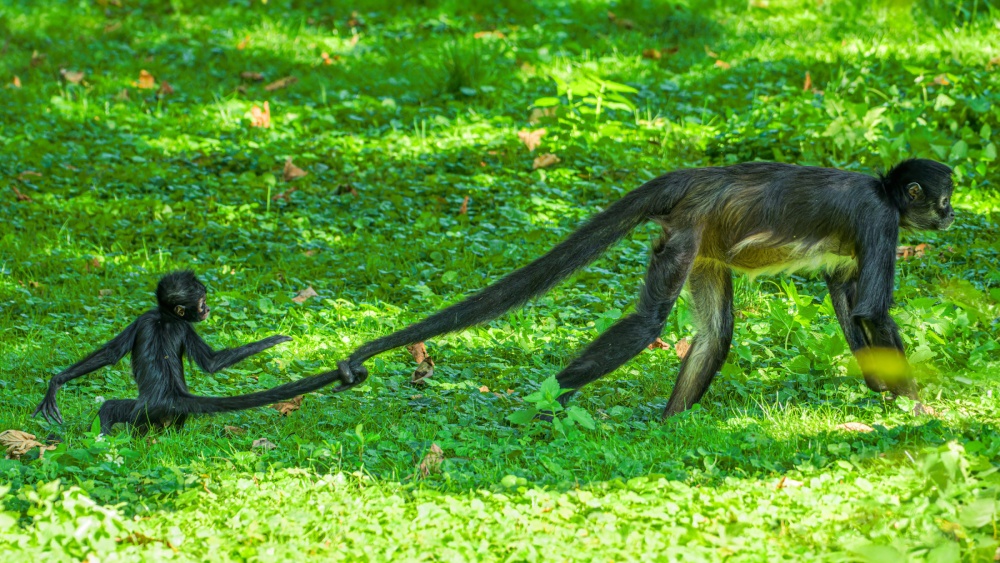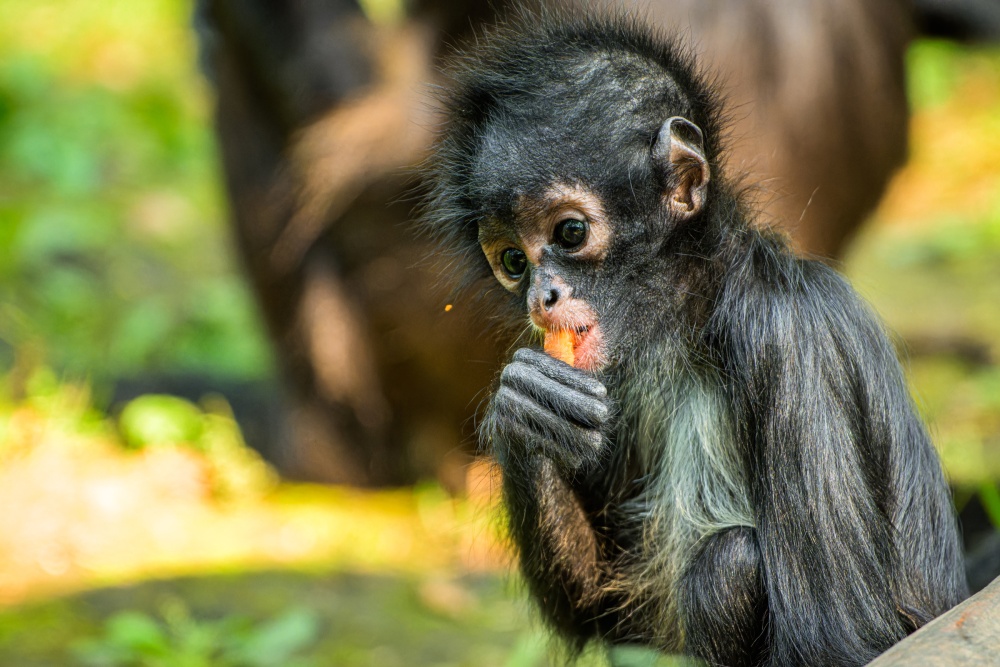Today twelve months have passed since a young Central American Mexican goldfish was born at the Prague Zoo. This small primate, later named Tiko, thrived and spent days in front of visitors on the Monkey Islands. At the same time, it is one of the most significant additions to the Prague Zoo. Only one other institution in Europe has succeeded in breeding this endangered subspecies of monkey.
Little boy Tik is exactly one year old today. The cubs of this endangered species are thriving and visitors can witness their cute smiles and playfulness in their outdoor enclosure on these sunny days. Photo by Petr Hamerník, Prague Zoo
“Tiko’s first birthday and he made us happy. He still drinks breast milk, but he has tried tasting vegetables. He is increasingly daring to stay away from his mother Talula. However, as soon as something startled him, he whistled, and that morning his mother ran to his rescue, and she hugged him.” said chief primate breeder Martin Vojáček.
Baby monkeys bond closely with their mothers, just like other New World primates, such as ring-tailed monkeys and macaques. Unlike old world monkeys – gueres or marsupials – in whose group several other “aunts” willingly care for their offspring, people see the little Tik almost exclusively by Talula’s side.
Tiko uses his long tail not only when climbing branches as a safety rope for the climber, but at the same time he also uses it to guard his mother Talula – so in this case it is more about parental supervision. Photo by Petr Hamerník, Prague Zoo
“People can watch the little ones’ exciting games almost any time. Mornings and evenings are the best times, but due to their daily activities and tenacity, there is almost always something going on on the island. From a visitor’s point of view, they are a very interesting species.” added Martin Vojáček.
Nowadays, one will find groups of five at exhibitions. Besides Tiko and his parents – the dominant pair, consisting of boy Benji and girl Talula – inhabited by Tiko’s three-year-old sister, Tianna, and unrelated girl Peťula. Prague Zoo is Europe’s most successful breeder of this endangered subspecies – a cub is born here regularly approximately every three years since 2007, while breeding began in 2005.
Chapani are generally characterized by a prehensile tail, which is more like a fifth limb. Thanks to this, their name can be translated from Spanish or English as “spider monkey”. The Central American Mexican capybara is an arboreal primate and therefore suffers largely from deforestation in its homeland. According to estimates, their population has declined by four-fifths in the last three generations.
Tiko has tried tasting solid food. In addition to vegetables such as carrots, spinach, tomatoes and cucumbers, unlike most other primates, chimpanzees also regularly receive fruit – apples, pears or peaches. Photo by Petr Hamerník, Prague Zoo

“Unapologetic social media guru. General reader. Incurable pop culture specialist.”









